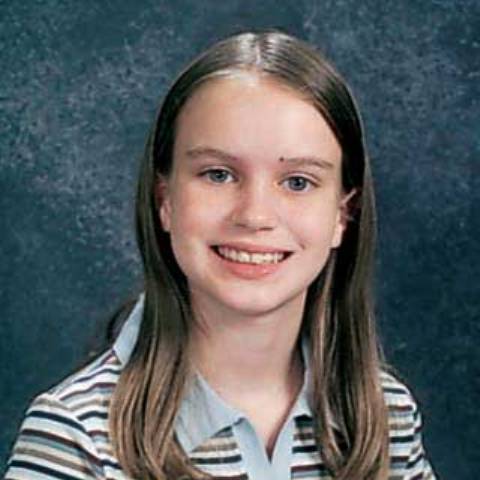Amee Eubank, daughter of Susan Storey Eubank, Rome, Ga., was chosen in mid-February by the National Society Daughters of the American Revolution as seventh grade district winner of the Xavier Chapter’s American History Essay Contest. The topic for the contest was “The Lousiana Purchase – Thomas Jefferson’s Presidential Legacy” and students were to pretend that they were Thomas Jefferson writing his autobiography near the end of his life. They had to look back and remember the Louisiana Purchase as the most significant event of their two-year presidency. One winner was chosen from each grade level in fifth through eighth grades. Sixty-two essays were received.
Amee’s 710-word essay follows:
As I am reflecting on important things that I have done in my life, I remember the Louisiana Purchase. In 1762, France had given up the Louisiana territory to Spain near the end of the French and Indian wars. But then in 1800, Napoleon tricked the Queen and King of Spain. They swapped half a dozen ships and the Louisiana Territory for a small piece of land in northern Italy. This trade was called the Treaty of Ildefonso. I found out that the treaty was a trick. Later, France took back the Italian piece of land, and they still had the Louisiana territory and the ships. The French territory extended from New Orleans to Montana.
Napoleon was planning to build a new French empire in the United States and an empire centered on the Caribbean sugar trade. Napoleon went with a large military force to take over Santo Domingo. Toussaint L’Ouverture and his army of former slaves led a revolt against the French, and won.
I was concerned about Napoleon’s intentions to form an empire in the United States and the possibility that he would not let settlers use the transportation of goods on the Mississippi River. Americans needed additional territory for westward movement. New settlers would depend on the use of the Mississippi River to make shipments of goods to New Orleans. I sent James Monroe and Robert R. Livingston to buy New Orleans for ten million dollars. While they were negotiating with France about buying New Orleans, Charles Maurice de Talleyrand made an outstanding deal with Monroe and Livingston to sell all of the Louisiana territory for only fifteen million dollars, which was about three cents an acre.
The Louisiana Purchase doubled the size of the United States by 828,000 square miles. The Louisiana territory was comprised of valuable grazing land, forests, rich mineral and wildlife resources, and productive soil.
One problem with the treaty was that the boundaries of the property were not described well in The Louisiana Purchase. There was a question about whether West Florida and Texas were part of the land purchased. Later in 1819, Spain gave up West Florida and Texas to the United States. I was not sure the Constitution permitted buying Louisiana, but the Senate went ahead and approved The Louisiana Purchase.
Before Louisiana was purchased, I wanted someone to explore the area. I had known Meriwether Lewis as a boy in Virginia, and I thought that he would be a good man to lead the exposition. He had learned about plants, animals, and exploration. Lewis wanted another person to help lead the expedition so he chose a man named William Clark. They were good hunters and accustomed to traveling in woodlands. They got together experts in carpentry, gun repair, and such other activities that would help them on their journey. I asked them to make notes of the customs of the Indians, plan and animal life of every kind as they traveled over this territory.
The exposition consisted of about forty men. They all traveled in three boats. The boats were loaded with food and materials that they would need on their journey. They also ate wild game. They kept exploring after they sent a messenger telling me about what was happening there. They went all the way to the top of the Rocky Mountains, called The Great Divide, following the Missouri River. Then, they traveled down the Snake River and Columbia River where they reached the Pacific Ocean. Their accounts include many stories of adventures with the Indians, accidents, sickness, bears and snakes, and only one person died while they were on the journey.
An Indian girl named Sacagawea helped the men on their journey by interpreting the Indian language and guiding them over the territory. She helped win the friendship of some of the Indians. The men met those Indians. The expedition furnished a lot of good information on maps, land features, and its inhabitants.
I am glad that I have helped this country become a much larger and better country in many ways. I hope that in the future, many people will learn about what I have done for the United States and me. I hope that people will celebrate what I have done throughout history.

